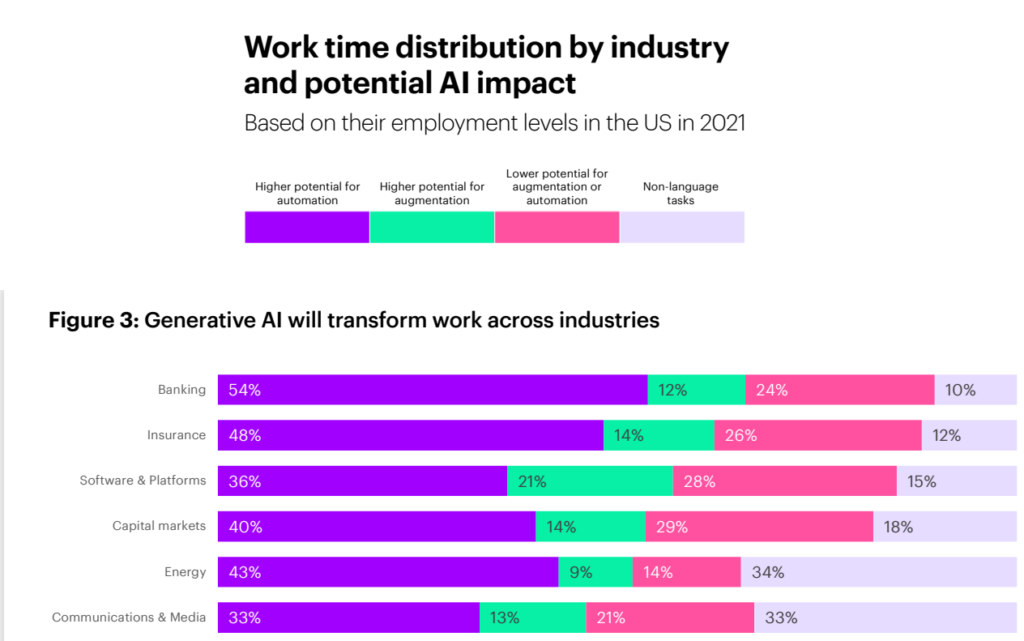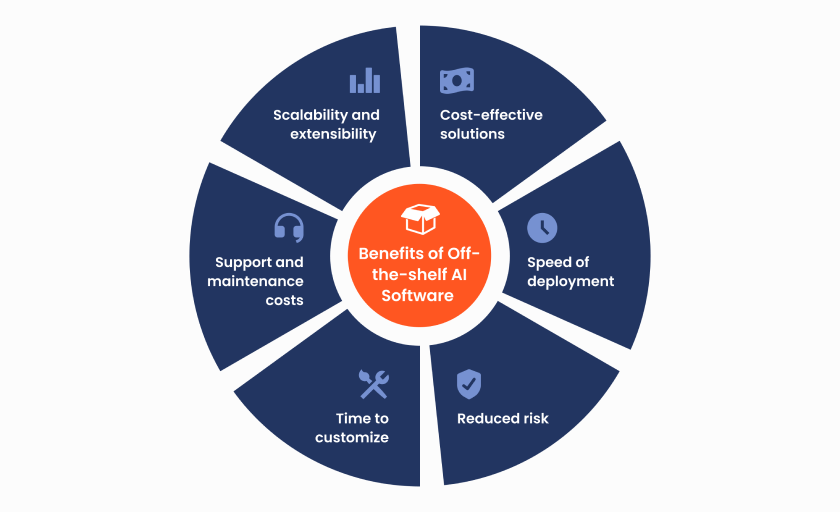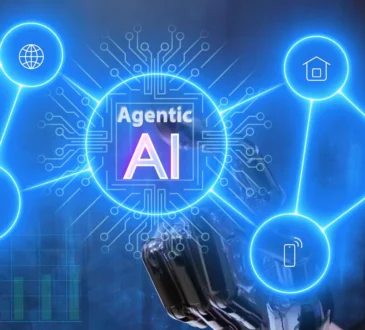
Artificial Intelligence (AI) is no longer just a buzzword in the tech world; it has rapidly become a driving force in shaping the future of various industries. From healthcare and finance to customer service and marketing, AI-powered software tools are revolutionizing the way businesses operate, improve efficiency, and enhance customer experiences. In this article, we’ll explore the rise of AI software, how it’s changing industries, and what you need to know to navigate this exciting technological shift.
What is AI Software?
AI software refers to applications and systems that use algorithms and machine learning to perform tasks that typically require human intelligence. These tasks can range from problem-solving and decision-making to natural language understanding and pattern recognition. AI systems continuously improve their performance by learning from data, making them more efficient and accurate over time.
There are different types of AI systems, but they generally fall into two categories:
- Narrow AI: AI that is designed to perform specific tasks, like facial recognition or language translation.
- General AI: A more advanced form of AI that can perform any intellectual task a human can do (though it’s still largely theoretical at this point).
Today, most of the AI tools available are narrow AI, but they’re still capable of remarkable feats that are transforming the way we work and interact with technology.
How AI Software is Impacting Industries

AI software tools are making waves across nearly every industry, enhancing efficiency, reducing costs, and improving outcomes. Let’s take a closer look at how AI is reshaping specific sectors.
1. Healthcare: Revolutionizing Patient Care and Diagnostics
In healthcare, AI is making significant strides by enabling faster diagnoses, personalized treatment plans, and more efficient operations. AI-powered diagnostic tools can analyze medical imaging (like X-rays and MRIs) with greater accuracy than human doctors in some cases, detecting early signs of diseases like cancer or heart conditions.
- Example: IBM Watson Health uses AI to analyze medical data and assist doctors in making treatment decisions. It can process vast amounts of information to recommend personalized treatment options for patients based on their medical history.
Additionally, AI chatbots are now being used for basic patient support, from answering medical questions to scheduling appointments, which helps reduce administrative workloads and allows healthcare providers to focus on more critical tasks.
2. Finance: Enhancing Decision-Making and Fraud Detection
AI software in the financial sector is driving improvements in areas like fraud detection, risk assessment, algorithmic trading, and customer service. Machine learning models can analyze vast amounts of transactional data to detect fraudulent activity in real time, identifying patterns that might go unnoticed by human analysts.
- Example: Kensho, an AI-driven analytics platform, helps financial institutions make better investment decisions by predicting market trends and providing insights based on vast datasets.
AI is also being used for credit scoring, loan approval processes, and customer support, where AI-driven chatbots are increasingly common in answering client queries and assisting with routine banking tasks.
3. Marketing: Personalization and Automation
In marketing, AI software is transforming how businesses engage with customers and deliver personalized experiences. AI tools analyze customer data to predict behaviors and preferences, enabling brands to create highly targeted and personalized marketing campaigns.
- Example: HubSpot uses AI to help businesses automate marketing tasks, such as email campaigns, social media management, and content creation, saving time and effort while ensuring that marketing messages reach the right audience.
AI-powered recommendation engines, like those used by Netflix and Amazon, suggest products, services, or media based on individual preferences and previous behaviors, keeping users engaged and increasing sales.
4. Customer Service: Chatbots and Virtual Assistants
AI-powered chatbots and virtual assistants have revolutionized customer service by providing immediate responses to customer inquiries 24/7. These AI systems can understand natural language, engage in meaningful conversations, and even resolve complex issues without human intervention. This leads to faster service, improved customer satisfaction, and reduced operational costs.
- Example: Zendesk offers an AI-powered customer support platform that automatically analyzes tickets, categorizes requests, and routes them to the appropriate agents, improving response times and reducing workload on human agents.
Additionally, AI-driven virtual assistants like Siri, Alexa, and Google Assistant are helping individuals complete everyday tasks, from setting reminders to controlling smart home devices, with simple voice commands.
5. Manufacturing: Smart Automation and Predictive Maintenance
AI has also found its way into manufacturing, where it’s enabling smart automation and predictive maintenance. AI-powered robots and machines can carry out repetitive tasks with precision, improving productivity and reducing errors. Moreover, predictive maintenance software uses AI to monitor equipment health and anticipate failures before they happen, allowing businesses to minimize downtime and reduce maintenance costs.
- Example: Siemens uses AI in its manufacturing facilities to optimize production lines, monitor supply chains, and automate quality control. This has led to more efficient operations and better product consistency.
Key Benefits of AI Software

- Increased Efficiency: AI can automate repetitive tasks, analyze large datasets, and make decisions faster than humans, allowing businesses to operate more efficiently.
- Cost Savings: By automating tasks and reducing human error, AI tools can help companies save on operational costs, such as labor and waste reduction.
- Improved Decision-Making: AI’s ability to process vast amounts of data means that it can provide insights and recommendations based on patterns that may not be immediately apparent to human decision-makers.
- Personalized Experiences: AI can tailor products, services, and content to individual preferences, enhancing customer experiences and increasing engagement.
- Predictive Power: In industries like healthcare, finance, and manufacturing, AI’s predictive capabilities help businesses anticipate trends, optimize workflows, and make better-informed decisions.
Challenges and Considerations
While AI offers significant advantages, it’s important to consider the challenges associated with its rise:
- Ethical Concerns: As AI becomes more integrated into decision-making processes, concerns around bias, transparency, and accountability have surfaced. It’s crucial to ensure that AI systems are developed ethically and are free from biases that could harm certain groups of people.
- Job Displacement: As AI automates tasks traditionally performed by humans, some jobs may become obsolete. While AI may create new opportunities, there will likely be a transition period where workers need to reskill for new roles in the workforce.
- Data Privacy: AI systems often rely on large datasets to function effectively, raising concerns about the security and privacy of personal data. Companies must ensure that they comply with data protection regulations and maintain strong security measures.
- Complexity and Cost of Implementation: While AI tools can deliver significant benefits, implementing them can be costly and complex. Businesses need to invest in both infrastructure and expertise to successfully adopt AI technology.
How to Get Started with AI Software
For businesses and individuals interested in leveraging AI, here are a few steps to get started:
- Identify Your Goals: Determine which areas of your business or life can benefit most from AI, whether it’s automating tasks, improving decision-making, or enhancing customer engagement.
- Explore Available Tools: There are many AI-powered tools available for various industries. Start by researching solutions that align with your goals. For instance, if you’re in customer service, explore AI chatbots like Drift or Intercom. If you’re in marketing, consider AI tools like HubSpot or Marketo.
- Start Small: Rather than implementing AI across all areas of your business, start with one department or process. This allows you to learn the technology, understand its impact, and refine your approach before scaling.
- Learn the Basics: Understanding the fundamentals of AI—such as machine learning, natural language processing, and neural networks—can help you make more informed decisions about which AI tools are right for you.
Conclusion: Embracing the Future of AI
AI software is no longer a distant concept—it’s here, and it’s changing industries for the better. Whether you’re in healthcare, finance, marketing, or customer service, AI tools can help you work smarter, make better decisions, and improve efficiency. While challenges remain, the benefits of AI are undeniable, and its impact will continue to grow in the coming years. By understanding the technology and taking proactive steps to implement AI software, you can stay ahead of the curve and harness its full potential.
As AI continues to evolve, it’s an exciting time for businesses and individuals alike to embrace this transformative technology.




